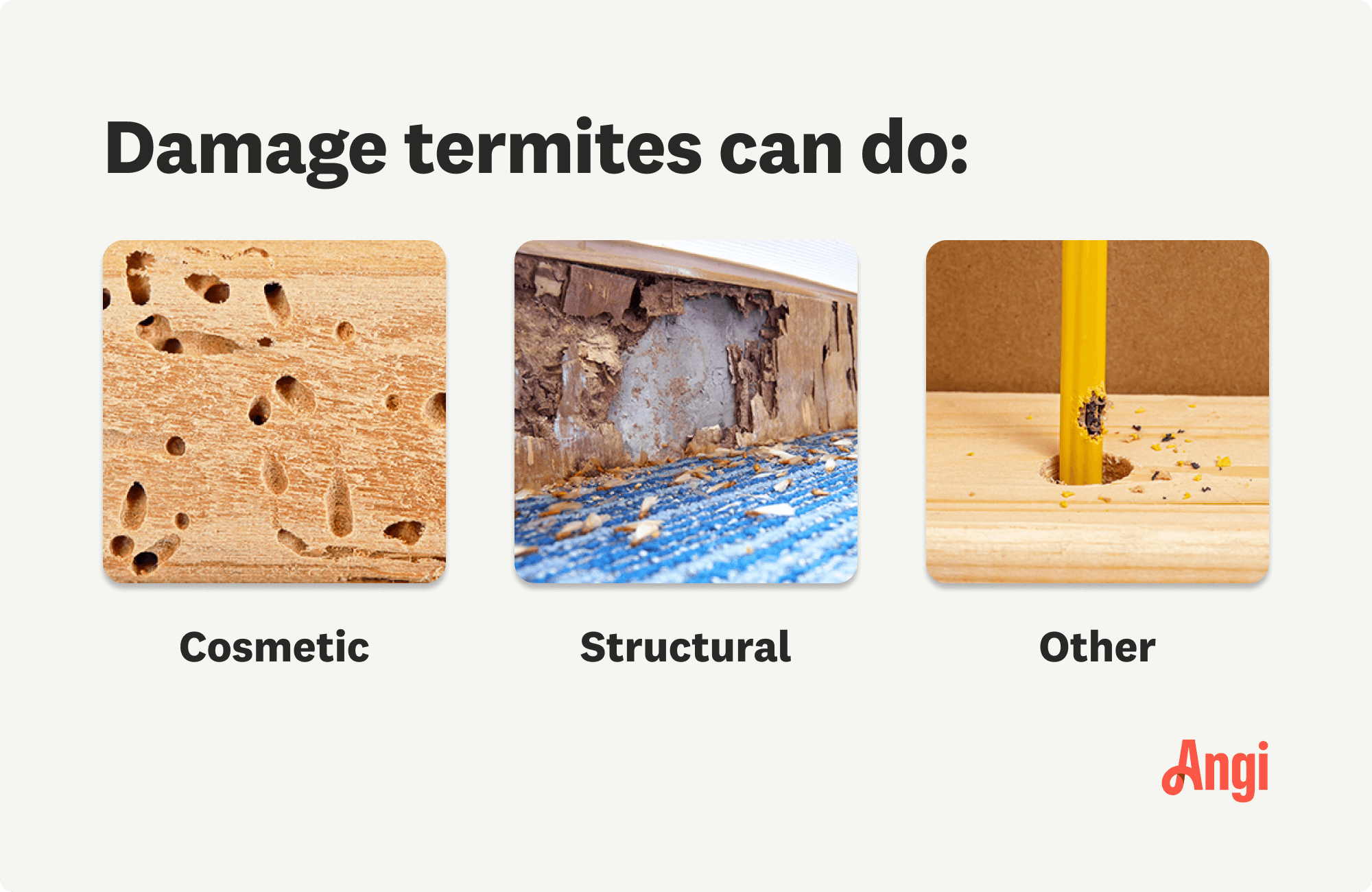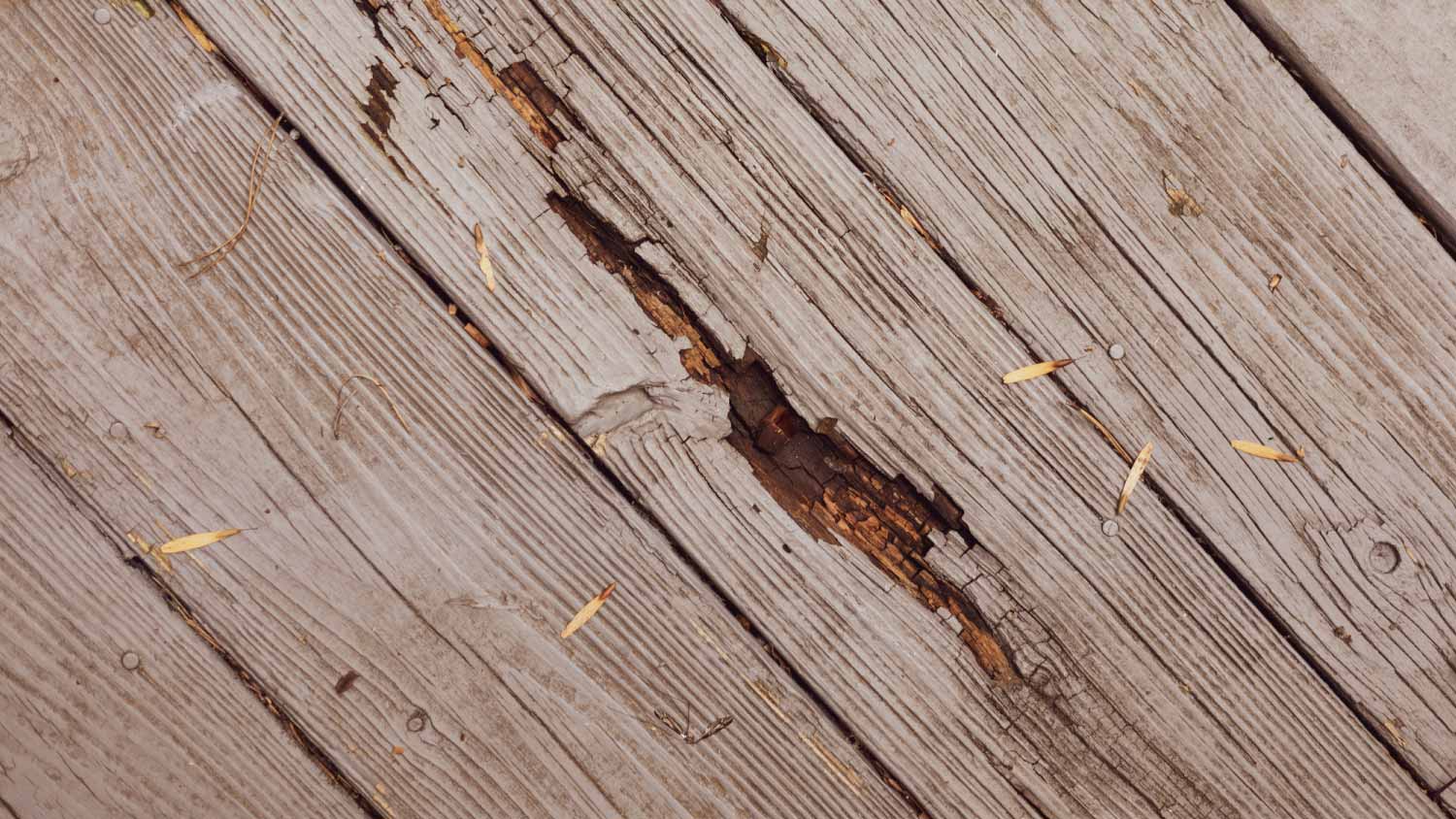Is Termite Spot Treatment an Effective Solution? A Complete Guide
If termites are eating away at your home—and your patience—spot treatment can help


Spot treatments are effective for isolated termite colonies.
You can use spot treatments for early stages of infestations.
Spot treatment types include boric acid, liquid nitrogen, heat, and orange oil.
Fumigation works best for larger infestations.
Your home is your happy place—and we’re guessing termites are unwelcome. But are spot treatments an effective way to send termites packing? Depending on the severity of your situation, you may be able to get rid of drywood termites with spot treatments—or you might need fumigation. Here’s everything you need to know about termite spot treatments.

What Is Spot Treatment for Termites?
Spot treatments are an effective way of exterminating drywood termites in the early stages of an infestation—with an emphasis on the word “early.” This type of treatment targets a limited area that’s typically less than 10 linear feet. If you have a widespread, major termite infestation, spot treatments won’t be effective enough, so you’ll need to get rid of termites with a more intensive solution.
Types of Spot Treatment

There’s more than one way to drive termites out of your home. In fact, you may come across any of the following common termite treatment options:
Spot Wood Treatment
Spot wood treatments involve injecting certain chemicals, like boric acid or orange oil, into the wood, where the termites are concentrated. This type of treatment technique involves drilling a series of small holes in the wood that has been affected by drywood termites. Once the holes are in place, a dry termite-killing agent (termiticide) is injected into the holes, effectively ending your termite problem. The following types of treatment, except for heat treatment, are variations of spot wood treatment.
Boric Acid Treatment
Boric acid is effective at treating termites because it causes the insect to dehydrate once it comes into contact with the boric acid. Then, the termite’s nervous system fails, killing the termite. Once you find the termites’ hiding spot, you can inject boric acid into the wood.
It will take multiple applications to treat all the termites and their larvae, though. While boric acid is toxic to termites, it is also harmful to humans. You’ll need to wear protective gear, like gloves, goggles, and a mask, before injecting it into the wood.
Heat Treatment
Termites love warm weather. They will thrive in temperatures of 75 to 95 degrees Fahrenheit. But once temperatures are above 100 degrees (or below 25 degrees), these pests will quickly die off.
Heat spot treatments for termites work by heating an area at high temperatures for an extended time. This method can be effective for eradicating small colonies of termites, but heat treatments can damage your home or furniture if you apply them in larger areas for longer amounts of time.
Liquid Nitrogen Treatment
Remember how temperatures below 25 degrees Fahrenheit will kill off termites? Then an ultra-cool temperature below nitrogen’s boiling point, -320 degrees Fahrenheit, should certainly do the trick. This advanced treatment method allows you to kill termites without fumigating your home, but it has its own risks, too.
Because liquid nitrogen is dangerous to handle without proper training, and you can only buy it in limited amounts, you’ll need to hire a professional for a liquid nitrogen termite spot treatment.
Orange Oil Treatment
Orange oil works best as a temporary termite spot treatment. Orange oil contains d-limonene, which is toxic to termites (and can also cause some irritation to skin and eyes, so use with caution). It only works for up to a week after applying and only when the termites come directly into contact with it, so you may need to reapply multiple times for it to be more effective.
How Much Does Termite Spot Treatment Cost?
Spot treatment is popular for early-stage drywood termite infestations because it is less expensive than fumigation, and much less invasive to the home.
The low-end cost of termite spot treatment is about $200, if you hire a pest control pro to administer the spot treatment. If you DIY the termite spot treatment, the only cost will be that of the dry termiticide agent, which can be as low as $20 and as high as $90, depending on the brand. But opting for DIY spot treatment means taking a pretty big risk: If the termites are anywhere outside of the area you have treated, you won’t effectively get rid of them.
If you have successfully spot-treated your home for a drywood termite infestation, but still see signs of termites, call a termite control company in your area. The cost of termite inspection is $165 on average, while you’ll spend around $230 to $970 on the cost of termite treatments. While spot treatment is effective if the problem is localized, if your termites keep returning or the problem is too big, you may need fumigation, which costs $1,400.
DIY vs. Hiring a Pro
If you spot termites in your house or yard, don’t hesitate to hire a local termite control professional to administer a removal treatment. While it’s possible to DIY spot treatment of a minor termite infestation, you might not have the skills, tools, or knowledge to fully eradicate the problem, leaving more time for them to spread. Termite professionals will inspect the entire area, apply the recommended eradication treatment, and provide follow-up treatment instructions. That’s why it’s worth the cost of hiring termite removal professionals who can eliminate your crawling critters before they cause permanent damage to your home.
Best Time to Use Spot Treatment on Termites
As such, spot treatments are not always the right choice for the homeowner waging war against termites. In order for spot treatment to be effective, you need to identify the exact type and location of the termite problem, and it must be isolated to one specific area.
In addition, within that area, there needs to be signs of termite activity (like droppings and shed legs) to confirm the infestation. To spot-treat effectively, you need to be able to reach the location with your drill. The final component for effective spot-treating for drywood termite infestations in their early stages is making sure that the termiticide is designed for spot treatment. If you aren’t using the right agent, you’ll only have to treat the area again.
Signs of Drywood Termites In Your Home
No one wants termites, but when you have them, you’ll often know by some tell-tale signs.
Keep an eye out for the following signs of termites:
Droppings: Termite droppings are small and look like sawdust.
Clicking sound: Termites bang their bodies on walls to warn their colony of danger, making a distinct clicking sound.
Wings: Reproducing termites lose their wings when they form a new colony, so you may find them scattered around your home.
Stuck windows and doors: Look for damage from wooden frames being hollowed out.
Swarming bugs in the air: You may see swarming termites, which look like a mass of flying, buzzing insects.





- Pest Control Services
- Ant Exterminators
- Mosquito Control Companies
- Rodent Control
- Termite Control
- Bee Removal
- Animal Control
- Bed Bug Control
- Pest Inspection
- Flea Control
- Raccoon Control
- Skunk Control
- Spider Control
- Cockroach Control
- Bird Control
- Bat Control
- Opossum Control
- Snake Control
- Groundhog Removal
- 24 Hour Pest Control Services
- Bug Control
- Fumigation Companies
- Termite Tenting
- Lawn Pest Control Services
- How to Get Rid of Termites and Make Sure They Never Come Back
- What Is a Termite Inspection?
- 11 Termite Prevention Tips to Protect Your Home
- 13 Fascinating Termite Facts Every Homeowner Should Know
- What’s the Difference Between Water Damage and Termites?
- Don't Ignore Termite Swarms Outside Your Home—Here's What to Do
- 7 Tips to Get the Right Water Treatment System for Your Home
- 6 Costly Home Repairs That Could Be Hiding in Your Dream Home
- When to Call an Exterminator for These 9 Pests (and Skip the DIY)
- Should I Clean the House After Pest Control?










